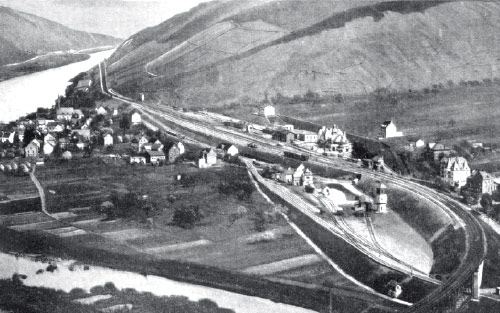The Moselle Line Bullay-Trier, Nicknamed ‘Little Boozer’s Train’ (Saufbähnchen)
In 1908 a fast train connected Trier and Traben-Trarbach, in which passengers were supplied with food and drinks the drinkingbouts on board soon gave this train its name ‘Saufbähnchen’.
Being one of the most wellknown passengers, writer Kurt Tucholsky in 1929 reported the wine tastings at each station and changing trains in Bullay, calling this train a ‘decent’ train.

The economic miracle of the 1950’s brought the competition of the road; floodings made the economic situation worse. Neither necessary modernization such as the renewal of cables and installation of heavy tracks nor an economic rise from transporting building material for the canalization of the Moselle between 1956 and 1964 could prevent the end of the ‘Saufbähnchen’. In 1961 mail transport by rail was stopped and shortly afterwards passenger transport from Traben-Trarbach to Bullay as well. The last route was closed on January 31st, 1968.
